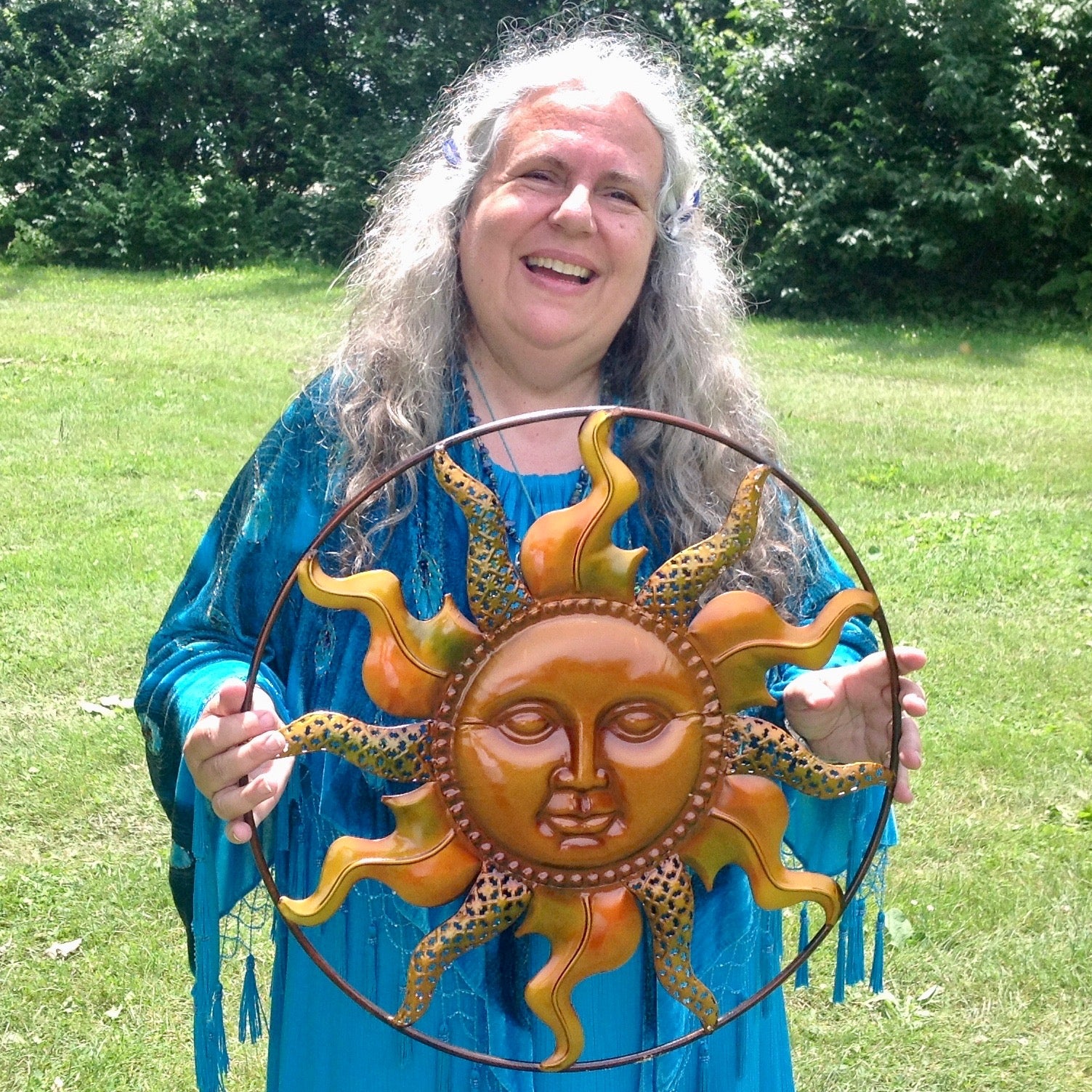Members from a pagan church in Wisconsin’s Driftless Area will travel to Missouri to celebrate this year’s summer solstice at one of the biggest nature spirituality festivals in the country.
This year’s Pagan Spirit Gathering, which started Sunday, is over eight days in Missouri.
High Priestess Selena Fox told WPR’s “Wisconsin Today” that her church, Circle Sanctuary, draws influence from antique pagan traditions all over the world. Circle Sanctuary is located on 200 acres of Wisconsin nature preserve near Barneveld.
“We see ourselves as part of a greater circle of nature,” Fox said. “Not as controllers of nature, but part of a living community. And we seek to not only be in good relation with other humans, but with plants, creatures and the whole of the natural world.”
On “Wisconsin Today,” Fox further discussed the historical origins of several ceremonies that will take place during the Pagan Spirit Gathering and shared how Wisconsin’s land influences Circle Sanctuary’s religious practices.
The following was edited for clarity and brevity.
Rob Ferrett: How do you celebrate the summer solstice at the Pagan Spirit Gathering?
Selena Fox: We have a morning ceremony, and on the night before the actual solstice day, we have a candlelight labyrinth lit from dusk until dawn.
One of our early members grew up in Latvia and was displaced by World War II. He has living memory of solstice celebrations from the first part of the 20th century. Some of the traditions that we carry on were inspired by Latvian established ways. We have people carrying fire in a procession to our main ceremonial area. Then, we kindle a fire in ceremony and keep that burning throughout the duration of the gathering.
RF: How does the connection with the land in Wisconsin influence the way Circle Sanctuary practices paganism?
SF: I think the land is one of the reasons that we continue to grow and develop. It’s a huge enough piece of land that there’s lots of nature trails for people who really need to have green space for personal enrichment and therapeutic healing.
We often say in this digital age, “Get off of the screen and into the green.” Indeed, from my background in psychology, there is evidence showing the importance of being in non-human-centric spaces. It is found to be very beneficial, regardless of what a person’s belief or culture might be.
RF: How have you seen the perceptions of paganism change over the 50 years since Circle Sanctuary was founded?
SF: More people are being open about their pagan affiliation, but there is still some real misunderstanding and misinformation circulating in the world about nature religion practitioners.
The “witch” word and the “pagan” word have many different meanings. Within our community, those terms refer to our spirituality and have nothing to do with demonic activities or evil practices.
“Regardless of what one’s spiritual, religious and/or philosophical orientation might be, the solstice is a really powerful time to celebrate our connection with the greater circle of nature.”
Selena Fox
RF: What do you say when people associate the words “Wiccan” or “pagan” with “evil” or “demonic” ideas?
SF: Some misperceptions can be easily dispelled when you have one-on-one conversations.
Unfortunately, when printing presses started to emerge years ago in Europe, some of the first things that were published were anti-pagan rhetoric. There has been 1,600 years of bad PR about the pagan religion.
I’m cheerful to report, as more people have been involved with inter-religious conferences, there is more understanding. People are able to connect together for common causes, like working for a better world, for a healthier environment and for social justice.
However, there are still some people who find “witch hunting” and anti-pagan rhetoric politically useful for fundraising. I’m really hoping that more people will understand that nature religion has contemporary forms. We are part of America’s prosperous religious and philosophical diversity.
It’s my hope that people will go beyond knee-jerk reactions and actually do some research and realize that we’re about communing with nature, not being in league with the devil.

RF: How would you suggest people take some time to appreciate the solstice?
SF: Watch the sun as it comes up on solstice day, and watch as it sets on solstice night. This year, it is Thursday, June 20. Some people like to go out and just be in nature on solstice eve, which this year will be June 19.
We have a free online guide on our website with some links to music and articles where people can get more information.
Regardless of what one’s spiritual, religious and/or philosophical orientation might be, the solstice is a really powerful time to celebrate our connection with the greater circle of nature, which we are part of.
Wisconsin Public Radio, © Copyright 2024, Board of Regents of the University of Wisconsin System and Wisconsin Educational Communications Board.


